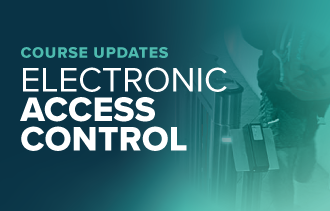New Electronic Access Control Course Updates Address Active Shooter Tragedies

It seems like every day we hear about another school or public shooting. It dominates the news and has become a point of stress and fear for many Americans.
According to the US Department of Justice Federal Bureau of Investigation, in 2018 alone, there were 27 incidents across 16 states resulting in 213 casualties.
There is a great deal our industry can do to prevent incidents and preserve life.
Protection Layers
In general, protection should be built in layers focusing on the outer perimeter, the building perimeter (entry points) and interior spaces.
Electronic access control can provide preventive measures to reduce access in these layers. In fact, the National Training School’s Electronic Access Control 14-hour online course has been recently updated with active shooter preparedness in mind.
In commercial buildings, this entails having different levels of access throughout the building to prevent individuals from going where they shouldn’t.
All visitors should be directed to a single monitored entry point, preferably an area that restricts access to the rest of the building. Security access can be restricted to certain times of day to prevent employee access to the building when they should not be there. Temporary badging should provide limited and timed access that automatically disables when no longer needed.
When implementing electronic access control or any security system, you should work with the owner and authorities to develop policies and procedures for building lockdowns and evacuations. You can then work to create secure paths of exit.
Even in public access buildings, many of the same requirements could be applied and buildings could use alarms to engage added security in the event of a shooter.
When designing systems, you will need to work with the local Authority Having Jurisdiction (AHJ) to ensure that you do not create additional life safety concerns, especially as it relates to fire.
When creating secure exit paths, you will likely need to provide egress access to all doors to allow emergency exit. Also, most AHJs will require a Knox Box, or something similar, to provide keyed access for emergency responders.
When designing access control systems to be secure, always remember code states, “No Special Knowledge Required.” – NFPA 101, 7.2.1.5.3 [‘18] -IBC 1010.1.9 [‘18]
Imagine having the ability to limit a shooter’s access to other parts of a building and restrict how they move. This could give individuals what could be life saving extra moments.
As an industry, we should keep these ideas in mind as we tackle security scenarios for job proposals and design.
NTS Adapts Electronic Access Control Course to Address Tragedies
ESA’s National Training School has updated its online Electronic Access Control course — a 14-hour course, followed by a two-hour examination, providing broad training and information to successfully design and install electronic access control systems. For more information, click here.




